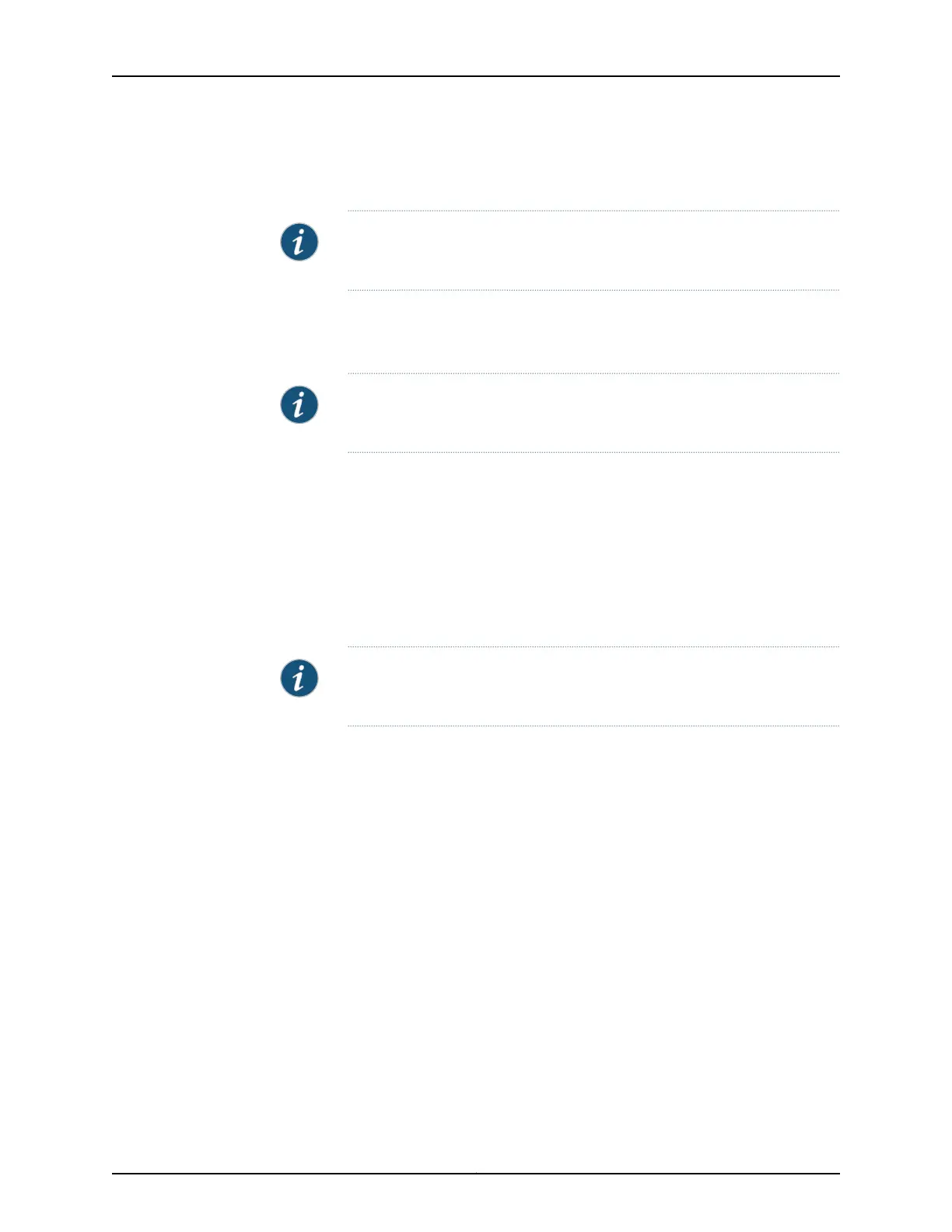The vlan-tags statement enables you to specify a pair of VLAN identifiers; an outer tag
and an inner tag.
NOTE: For a single bridge domain, you can include either the vlan-id statement
or the vlan-tags statement, but not both.
To include one or more logical interfaces in the bridge domain, specify the interface-name
for each Ethernet interface to include that you configured at the [edit interfaces] hierarchy
level.
NOTE: A maximum of 4000 active logical interfaces are supported on a
bridge domain configured for Layer 2 bridging.
To associate a routing interface with a bridge domain, include the
routing-interface routing-interface-name statement and specify a routing-interface-name
you configured at the [edit interfaces irb] hierarchy level. You can configure only one
routing interface for each bridge domain. For more information about how to configure
logical and routing interfaces, see the Junos OS Network Interfaces Library for Routing
Devices.
In Junos OS Release 9.0 and later, IRB interfaces are supported for multicast snooping.
For more information about multicast snooping, see the Multicast Protocols Feature Guide.
NOTE: When you configure multiple IRB logical interfaces, all the IRB logical
interfaces share the same MAC address.
The following is a sample configuration for IRB over bridge domain:
[edit]
interfaces {
ge-1/0/0 {
encapsulation flexible-ethernet-services;
flexible-vlan-tagging;
unit 0 {
encapsulation vlan-bridge;
vlan-id 100;
}
}
}
ge-1/0/1 {
encapsulation flexible-ethernet-services;
flexible-vlan-tagging;
unit 0 {
encapsulation vlan-bridge;
vlan-id 100;
}
}
}
763Copyright © 2017, Juniper Networks, Inc.
Chapter 24: Configuring Layer 2 Bridging and Q-in-Q Tunneling

